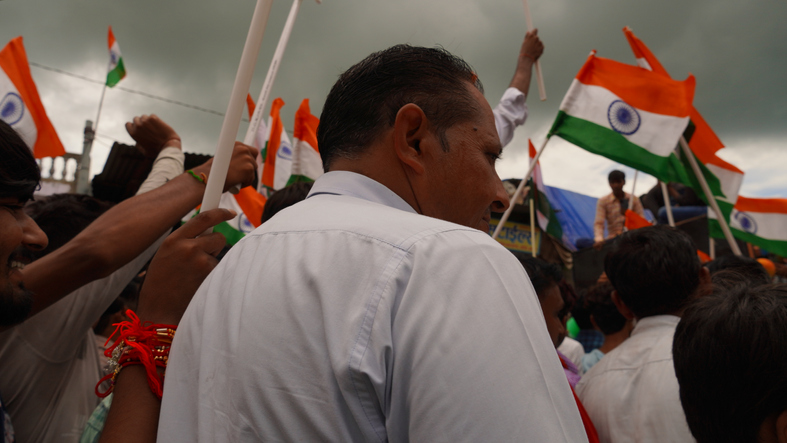There is a surprising subtlety and sophistication to how many contemporary authoritarian and nationalist regimes effect their ends. Here are three strategies of subterfuge by which these governments may appropriate constitutional rights or values to disguise their authoritarian nationalist actions, illustrated through the Indian government’s defense of a controversial citizenship law.
India’s nationalist citizenship law
In 2019, the Hindu nationalist Bharatiya Janata Party returned to power in India. Hindu nationalism generally includes a commitment to correct perceived historical injustices to Hindus, end what nationalists see as the “appeasement” of Indian Muslims, and turn India into a “Hindu Rashtra,” or a homeland for Hindus. The Bharatiya Janata Party oversaw the enactment of the Citizenship (Amendment) Act 2019 (CAA), which gave Hindu, Sikh, Buddhist, Jain, Parsi, and Christian—but not Muslim—migrants from Afghanistan, Bangladesh, and Pakistan a fast-tracked pathway to Indian citizenship. Critics fear that the CAA forms part of a plan to exclude citizens, residents, and immigrants whom the government disfavours (particularly Muslims) from citizenship.
In this context, the Indian government used strategies of subterfuge in the face of the strong, concerted, tumultuous, multipronged opposition to the CAA.
Brood parasitism and constitutional values
Brood parasites like the cuckoo leave their eggs to be incubated, hatched, and raised in the nests of other birds. They pass their own eggs off as those of their hosts. Such parasitism may result in the diminishment or total loss of the host’s own eggs as the brood parasite’s eggs often hatch early and evict and kill all of the host’s eggs and hatchlings.
The first strategy of subterfuge—illustrated by the Hindu nationalists’ engagement with secularism—is similar. Hindu nationalist groups do not generally denounce secularism, but rather they cast themselves as its true proponents and explicators. In defending the CAA, the government appealed to secularism repeatedly. They used public discourse and court proceedings to plant an alternative Hindu nationalist vision of secularism in incubation sites. The hoped-for result was that, without any direct effort at constitutional amendment, the nationalist-friendly version of secularism would (like the cuckoo’s eggs) be successfully incubated by other constitutional actors and ultimately displace secularism as it is currently understood in the Indian Constitution.
Constitutional camouflage
Not all animal subterfuge has the complex and long-term goal of the brood parasite. The camouflage of the lizard is used temporarily so that it can escape detection, particularly from predators who might pose a threat. The Indian government used religious freedom in a similar way: as a camouflage to disguise the true nature of the CAA and to avoid the challenges from those who (sans camouflage) would be opposed to it.
The government claims that the CAA recognizes “religious persecution in the particular neighbouring states” and “represents a protection of rights [and] freedom of religion, which is an invaluable human right.” There is no doubt that there is religious persecution in Afghanistan, Pakistan, and Bangladesh, but the government’s other statements gave the attempted camouflage away. The home minister, Amit Shah, made multiple statements making it clear that the CAA’s main purpose is to help filter out “undesirable” citizens, while retaining desirable citizens and migrants. Critics of the CAA feared precisely that it would be used to filter out Muslims and others whom the government considered undesirable; the “religious freedom” camouflage was not very convincing.
Pretended precedents
A further government defense of the CAA was that the CAA “is reflective of our long-standing national commitment in respect of human rights issues arising from the tragedy of Partition of India.” The government seeks to establish continuity between the CAA and historical international agreements on minorities—particularly the Nehru-Liaquat Pact—in order to bolster its claim that the CAA is consistent with, perhaps even required by, human rights norms.
But there is no plausible way to understand the CAA as part of, or continuous with, these agreements—quite the contrary. The Nehru-Liaquat Pact and the CAA take contradictory positions on the relevance of religion to citizenship. As a central commitment of the pact, “the Governments of India and Pakistan solemnly agree that each shall ensure, to the minorities throughout its territory, complete equality of citizenship, irrespective of religion.” It is a perversion of this central commitment to describe it as the precursor to the CAA, which explicitly makes a fast-tracked pathway to citizenship dependent upon religion. The pact is only a pretended precedent for the CAA.
Violent riots in Delhi and the COVID-19 pandemic significantly dampened protests against the CAA. At the time of writing, the Supreme Court has not yet heard the petitions challenging the constitutionality of the CAA (arguably in line with its current strategy of avoiding conflict and controversy by delay). It is thus too early to assess the effect of the government’s strategies of subterfuge or to assess the success of the legal and political attempts to respond to those strategies.
It is hoped that this analysis of one nationalist government’s strategy, based on a longer scholarly journal article, might offer some insight into how strategies of subterfuge of other authoritarian and nationalist governments may be uncovered and proved.




